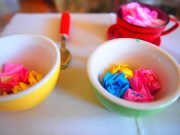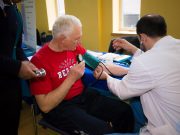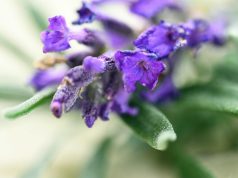In today’s fast-paced world, it’s all too easy to find ourselves overwhelmed, stretched thin by the demands of daily life. As we juggle work, family, and personal responsibilities, our well-being often takes a back seat. But what if there was a way to nurture your mind, body, and spirit in harmony, creating a balanced and fulfilling life? Welcome to the world of holistic wellness—a comprehensive approach that acknowledges the interconnectedness of your entire being. In this article, we’ll guide you through the steps to craft a holistic wellness routine tailored to your unique needs, helping you cultivate a sense of peace, resilience, and vitality. Whether you’re just beginning your wellness journey or seeking to deepen your existing practice, our empathetic approach will support you every step of the way. Let’s embark on this transformative path together, prioritizing your well-being and embracing a more harmonious life.
Understanding Your Unique Wellness Needs
Every individual is a mosaic of different experiences, preferences, and physiological traits, which means your path to wellness is as unique as your fingerprint. To truly thrive, it’s essential to recognize and honor these differences by crafting a wellness routine that aligns with your personal needs and lifestyle. Start by taking an introspective journey, asking yourself what makes you feel balanced and whole. Consider your physical, emotional, and mental health needs, and how they intertwine to support your overall well-being.
- Physical Needs: Determine the type and intensity of exercise your body craves. Do you flourish with high-energy workouts like running or cycling, or do you find peace in the slow, deliberate movements of yoga or tai chi?
- Emotional Well-being: Reflect on activities that boost your mood and reduce stress. This could be anything from journaling and meditation to spending quality time with loved ones or immersing yourself in nature.
- Mental Health: Identify practices that stimulate your mind and encourage growth. This might include reading, learning a new skill, or engaging in puzzles and games that challenge your cognitive abilities.
| Aspect | Questions to Explore |
|---|---|
| Diet | What foods nourish my body and mind? Are there any dietary restrictions or preferences I need to consider? |
| Rest | How much sleep do I need to feel refreshed? What bedtime routine supports restful sleep? |
| Social Connection | What kind of social interactions energize me? How can I foster deeper connections? |
By addressing each aspect thoughtfully, you can craft a holistic wellness routine that not only caters to your unique needs but also evolves with you as those needs change over time. Remember, the key is to remain flexible and open to adjustments, ensuring that your routine is a source of joy and fulfillment.

Integrating Mindful Practices into Daily Life
Integrating mindful practices into your daily routine doesn’t have to be a daunting task. It can be as simple as taking a few moments each day to center yourself and connect with your inner peace. Here are some approachable ways to weave mindfulness into your life:
- Morning Meditation: Begin your day with a short meditation session. Even five minutes of focused breathing can set a positive tone for the rest of your day.
- Mindful Eating: Pay attention to the flavors, textures, and aromas of your meals. This practice not only enhances your eating experience but also promotes better digestion and satisfaction.
- Nature Walks: Take a walk in a park or any green space. Use this time to observe the natural beauty around you, listen to the sounds, and feel the ground beneath your feet.
Incorporating mindfulness can also be enhanced by creating a personalized schedule that aligns with your lifestyle. Here’s a simple example of how you might structure your day:
| Time | Activity | Mindfulness Tip |
|---|---|---|
| 7:00 AM | Wake Up & Meditate | Focus on your breath |
| 12:30 PM | Lunch Break | Practice mindful eating |
| 6:00 PM | Evening Walk | Engage with your surroundings |
| 9:30 PM | Bedtime Reflection | Reflect on the day’s positives |
By gradually introducing these practices, you’ll cultivate a deeper sense of awareness and tranquility. Remember, the journey to mindfulness is personal and should be tailored to fit your unique needs and schedule.

Crafting a Nourishing Nutrition Plan
Creating a balanced nutrition plan is a cornerstone of holistic wellness. It involves more than just counting calories or restricting certain foods. Instead, it’s about nourishing your body with a variety of nutrients while respecting your individual preferences and lifestyle. Begin by focusing on whole, unprocessed foods that fuel your body and mind.
- Prioritize Plant-Based Foods: Incorporate a rainbow of fruits and vegetables into your meals. They are rich in essential vitamins, minerals, and antioxidants.
- Include Healthy Fats: Don’t shy away from fats. Opt for sources like avocados, nuts, and olive oil, which support brain health and hormone balance.
- Stay Hydrated: Water is crucial for every bodily function. Aim for at least 8 glasses a day, and consider herbal teas or infused waters for variety.
To help visualize your daily intake, consider the following sample nutrition plan:
| Meal | Components | Benefits |
|---|---|---|
| Breakfast | Oatmeal with berries and chia seeds | Rich in fiber and antioxidants |
| Lunch | Grilled chicken salad with mixed greens and quinoa | High in protein and essential nutrients |
| Dinner | Baked salmon with roasted vegetables | Omega-3s for heart health |

Balancing Physical Activity with Rest and Recovery
Finding the right equilibrium between staying active and allowing your body to recover is crucial for a sustainable wellness routine. Physical activity and rest are two sides of the same coin, and both are essential for achieving your health goals.
When planning your routine, consider the following tips:
- Listen to Your Body: Pay attention to signs of fatigue or soreness. It’s okay to take a day off when needed.
- Incorporate Active Rest: Activities like walking, yoga, or light stretching can promote recovery without straining your muscles.
- Schedule Regular Rest Days: Plan specific days where you focus solely on rest and recovery to prevent burnout.
To help you better manage your routine, here’s a simple table outlining a balanced weekly plan:
| Day | Activity | Focus |
|---|---|---|
| Monday | Cardio | Endurance |
| Tuesday | Strength Training | Muscle Building |
| Wednesday | Yoga | Flexibility |
| Thursday | Rest | Recovery |
| Friday | HIIT | Cardio & Strength |
| Saturday | Hiking | Outdoor Activity |
| Sunday | Rest | Recovery |
Remember, it’s not about doing more, but doing what feels right for your body. Rest is not a sign of weakness but a fundamental component of a holistic approach to wellness. Adjust your routine based on your individual needs and enjoy the journey to a healthier you.








































